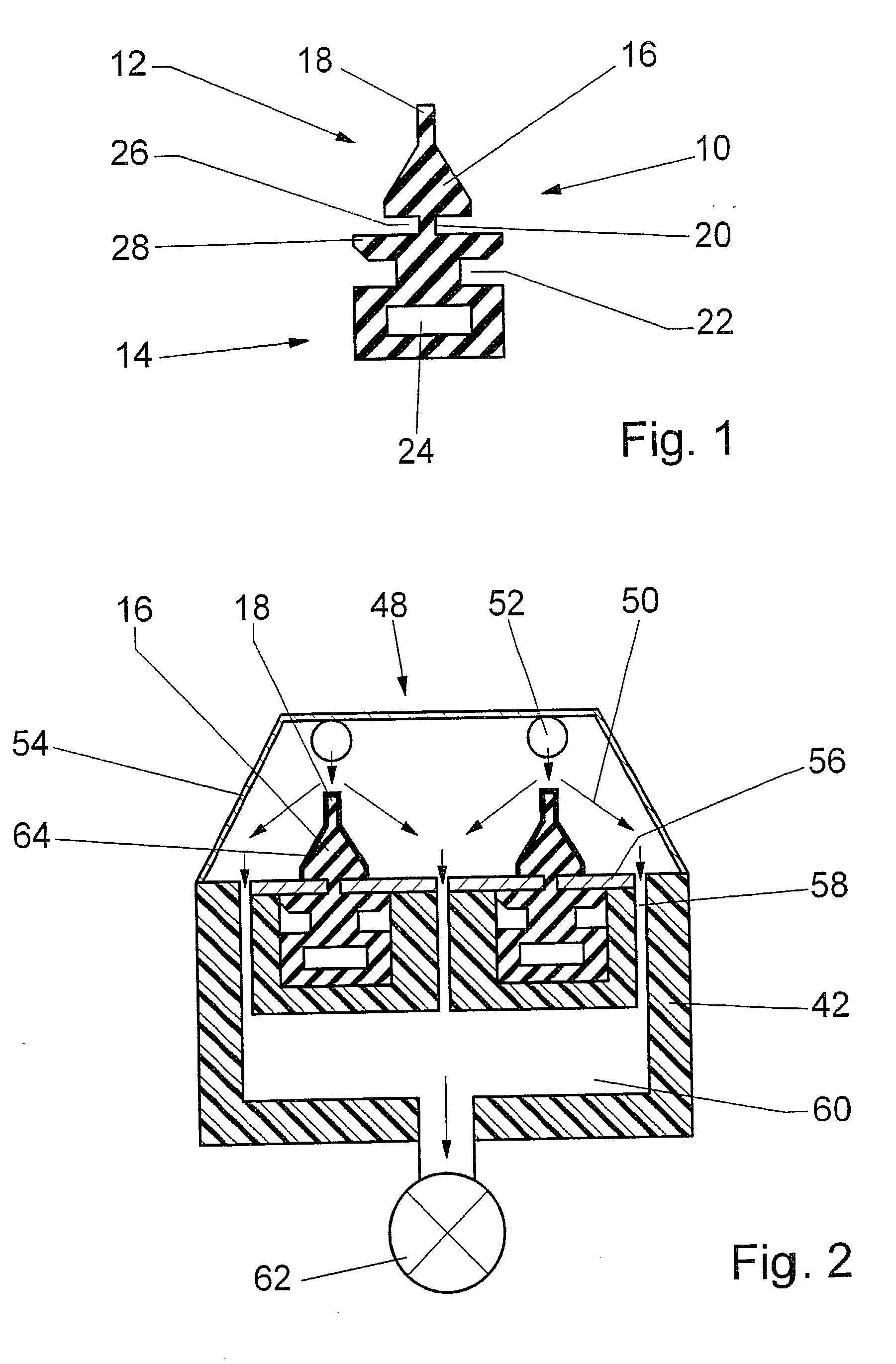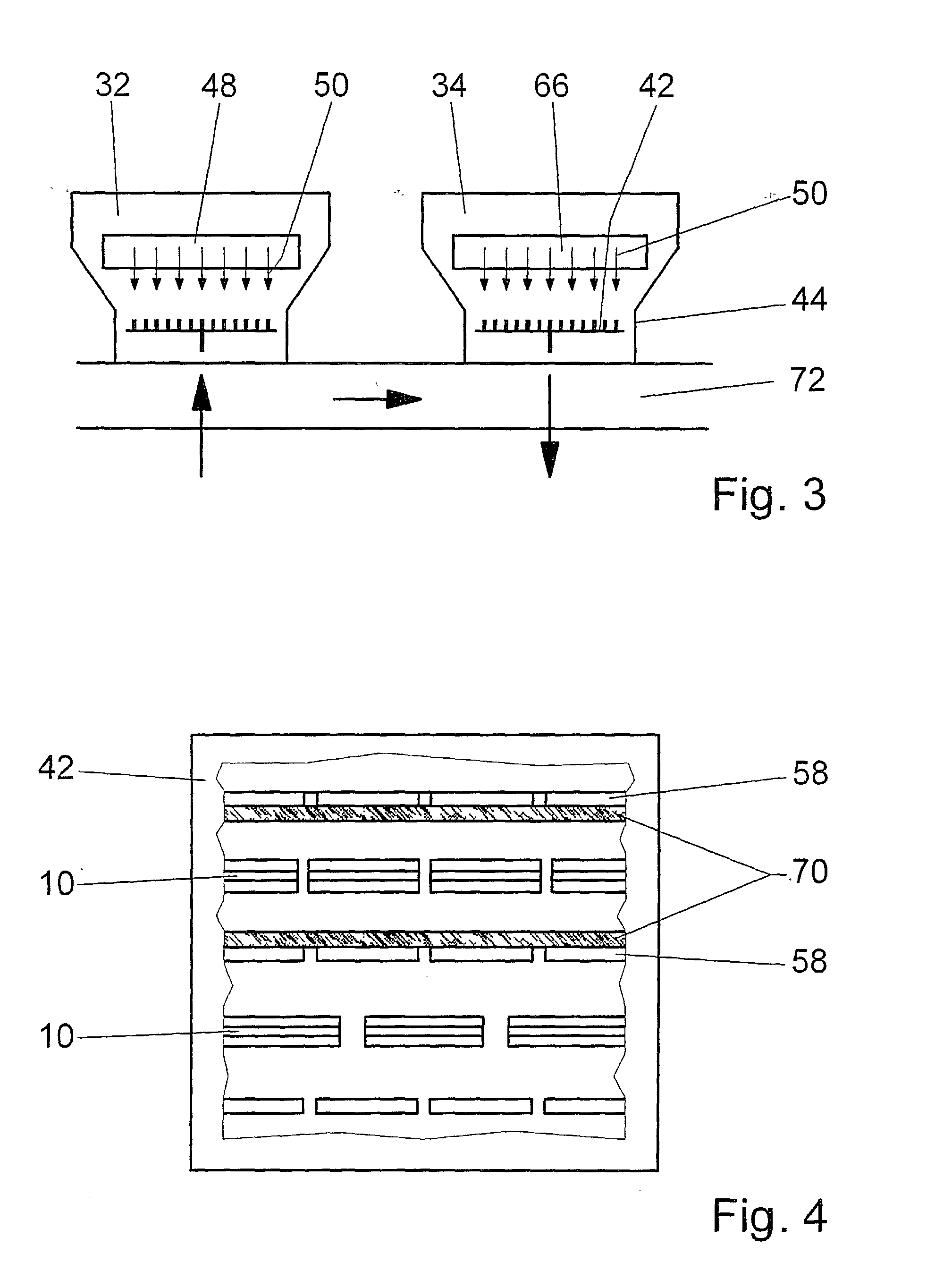Method and device for coating at least one wiper-blade element
a technology of wiper blades and elements, applied in vehicle maintenance, vehicle cleaning, transportation and packaging, etc., can solve the problems of affecting the quality of wiper blades, so as to reduce the risk of rejects, favorable pricing, and positive results
- Summary
- Abstract
- Description
- Claims
- Application Information
AI Technical Summary
Benefits of technology
Problems solved by technology
Method used
Image
Examples
Embodiment Construction
[0023] The wiper blade element 10 according to FIG. 1 has a profiled back 14 and an operational part 12 with a wiper wedge 16 and a wiper lip 18 formed thereon. A tilting piece 20 connects the operational part 12 to the profiled back 14 and permits the wiper lip 18 to tilt over in the reversal positions of the wiper so that the wiper lip 18 encloses an acute angle with the vehicle window in the wiping direction. Along both sides of the tilting piece 20, longitudinal grooves 26 are formed between the wiper wedge 16 and a covering strip 28 of the profiled back 14. In the tilting motion, one shoulder of the wiper wedge 16 rests against the covering strip 28 and this limits the tilting motion. In addition, claw grooves 22 extend on both sides of the profiled back 14 and are engaged by the claws of a claw bracket of the wiper, which are not shown in detail. Finally, the profiled back 14 has a longitudinal channel 24 into which a spring strip, not shown in detail, is inserted in order to ...
PUM
| Property | Measurement | Unit |
|---|---|---|
| pressure | aaaaa | aaaaa |
| frequency | aaaaa | aaaaa |
| frequency | aaaaa | aaaaa |
Abstract
Description
Claims
Application Information
 Login to View More
Login to View More - R&D
- Intellectual Property
- Life Sciences
- Materials
- Tech Scout
- Unparalleled Data Quality
- Higher Quality Content
- 60% Fewer Hallucinations
Browse by: Latest US Patents, China's latest patents, Technical Efficacy Thesaurus, Application Domain, Technology Topic, Popular Technical Reports.
© 2025 PatSnap. All rights reserved.Legal|Privacy policy|Modern Slavery Act Transparency Statement|Sitemap|About US| Contact US: help@patsnap.com



